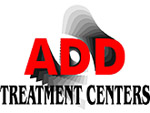|
Featured
Article
Attention Deficit/Hyperactivity
Disorder
Article
contributed by ADD Treatment Centers
Attention
Deficit/Hyperactivity Disorder (ADHD) is the
most commonly diagnosed behavioral disorder
of childhood, estimated to affect between 3%
and 5% of school-aged children, as well as 1%
to 6% of Adults.
Diagnosis
Accurate
diagnosis is difficult (usually requiring multiple
tests and more than one visit to a healthcare
professional) but essential, as early treatment
can substantially affect the course of a child's
educational and social development.
A
person is considered to have ADHD if he or she
demonstrates symptoms of inattention, hyperactivity,
and impulsivity for at least 6 months in at
least two settings (such as at home and in school).
The symptoms must appear before age seven and
cause significant functional problems at home,
in school, and in various social settings. Although
many children with ADHD have symptoms of both
inattention and hyperactivity-impulsivity, some
demonstrate symptoms from only one of the clusters
below.
Symptoms
of Inattention
-
Fails to pay close attention to details or
makes careless mistakes
- Has
difficulty sustaining attention in tasks or
play activities
- Does
not seem to listen when spoken to directly
- Does
not follow through on instructions and fails
to finish schoolwork, chores, or duties in
the workplace
- Has
difficulty organizing tasks and activities
- Avoids,
dislikes, or is reluctant to engage in tasks
that require sustained mental effort
- Loses
things necessary for tasks or activities
-
Is easily distracted by extraneous stimuli
- Is
forgetful in daily activities
Symptoms
of Hyperactivity and Impulsivity
- Fidgets
with hands or feet or squirms in seat
-
Leaves seat in situations where remaining
seated is expected
- Runs
or climbs excessively in inappropriate situations
(in adolescents or adults, may be limited
to subjective feelings of restlessness)
- Has
difficulty playing or engaging in leisure
activities quietly
- Acts
as if "driven by a motor"
- Talks
excessively
- Blurts
out answers before questions are completed
- Has
difficulty awaiting turn
- Interrupts
or intrudes on others
Causes
ADHD tends to occur in families, and often overlaps
with other brain-based disorders such as Depression,
Learning Disorder, Tic Disorder, or Obsessive
Compulsive Disorder. Genetic and environmental
factors that affect brain development during
prenatal and postnatal life are likely involved.
Children and adults with ADHD often are found
to have altered brain activity in the prefrontal
cortex, a region thought to be the brain's command
center. Researchers also find that hyperactive
behavior in children may result from excessive
slow-wave (or theta) activity in certain brain
regions, although a number of ADHD subtypes
with quite different brain features have been
identified, contributing to the complexity of
evaluation and treatment.
Treatment
Multiple
strategies are most effective to manage ADHD
over the long-term. A technique called Neurofeedback,
or EEG Biofeedback, is a non-drug alternative
shown to be beneficial in about 70% of cases.
Medications are beneficial in 55% to 60% of
cases. Behavioral treatments include individual
and family education, behavioral therapy, school
remediation, and social skills training. Nutritional
management is a frequently explored alternative
therapy. Although relatively few studies support
various nutritional approaches as effective
for ADHD, a growing number of studies do suggest
an association between essential fatty acid
(EFA) deficiencies and hyperactivity in children.
Preliminary evidence also indicates that homeopathy
may significantly improve behavior among children
with ADHD.
Research
suggests that children who receive sustained
comprehensive treatment (such as medication,
behavioral therapy, and Neurofeedback) are less
likely to have behavioral problems in adolescence.
In most cases, ADHD can be effectively managed
throughout life, particularly when multiple
treatment strategies are combined.
Adapted
from information supplied by the Center for
Integrative Medicine, University of Maryland
Medical Center, 2004.
©
Copyright 2007 ADD Treatment Centers. No unauthorized
duplication without written consent.
Disclaimer:
The above information is presented for educational
purposes only. Statements have not been evaluated
by the FDA. Products mentioned are not intended
or effective for the treatment or prevention
of any disease. Consult your physician for all
your health needs.
OrangeCounty.net is a distributor
of information received from many sources and
therefore does not make any claims of accuracy.
In no event shall OrangeCounty.net) be liable
for loss or damages of any nature arising out
of or in any way connected with such information,
including but not limited to, special, consequential,
indirect or punitive damages.
OrangeCounty.net
shall not be liable for errors, omissions or
other wrongful conduct of any third party or
any provider of information
|



![]()
